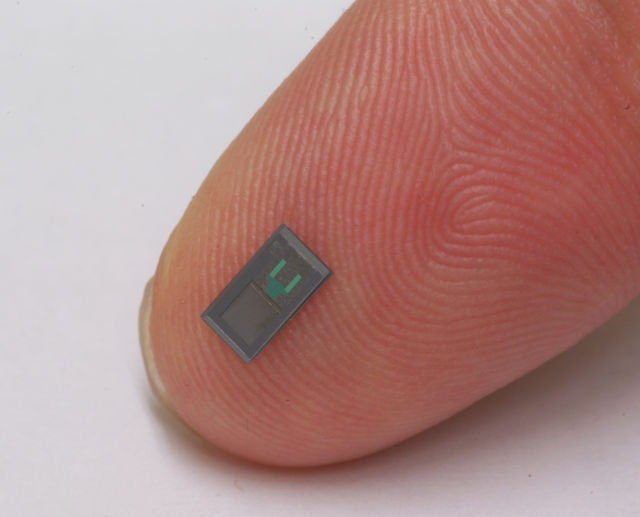
Courtesy of J. Rogers, University of Illinois
Scientists from the University of Illinois published a report in the journal Nature demonstrating a new class of dissolvable brains sensors that tuck into the folds of a living brain and wirelessly transmit the critical health information that must be monitored following traumatic brain injuries.
The flexible microelectromechnical sensors are roughly the size of a grain of rice and dissolve within five days, making them an ideal substitute in place of the invasive equipment doctors currently use to monitor brain swelling and inflammation. Not only will this improve patient care for head trauma victims, the researchers explain, but the sensors may be used to monitor the heart and other organs as well.
Led by professor John Rogers, the team successfully tested the flexible device in the brains of living rats, with larger animals to follow before moving on to human clinical trials five years down the line. In the meantime, Rogers aims to further improve the design, pushing its five day lifespan to four weeks.

Courtesy of J. Rogers, University of Illinois
Designing the MEMS to be dissolvable and wireless required that Rogers and his team join forces with Rory Murphy, chief resident of neurosurgery at Washington University School of Medicine and co-author of the paper. Together they created a membrane out of polylactic-co-glycolic acid, the biodegradable polymer found in dissolvable stitches and other medical devices. This sits on a substrate made from a foil of magnesium and silicon, that’s etched with crevices to create microscopic air cavities that allow the membrane to detect pressure changes in the surrounding fluid.
Remote capabilities were added by running biodegradable molybdenum wires from the implanted device to a miniature wireless transmission device that externally located on the top of the skin. The internal sensors can be adapted to track pressure, temperature, pH, motion, flow, and specific biomolecules. A completely wireless version is underway, but it’s not entirely biodegradable at this moment in the R&D process.
Rogers wants to eventually expand beyond sensing, to create a completely resorbable device that’s able to release timed drug doses or electrically stimulate nerves or accelerate healing or reduce pain.
Source: IEEE Spectrum and Ars Technica
Advertisement
Learn more about Electronic Products Magazine





